| The following wildfowl, amongst others, can be found in the Tundra Zone at WWT Slimbridge, click image for information: - |
| |
|
 |
|
|
|
 Barnacle Goose Barnacle Goose |
| The Barnacle Goose belongs to the Branta genus which consists generally of species with largely Black plumage, distinguishing them from the Anser genus who largely have Grey plumage. |
| |
|
 |
|
|
|
 Bean Goose Bean Goose |
| The Bean Goose is similar in appearance to the Greylag Goose, however, they can be identified by their Orange legs and Orange beak with Black at the base and the tip. |
| |
 |
| |
|
 |
|
|
|
 Common Eider Common Eider |
| The Eider is a large seaduck of the genus Somateria of which there are 3 species, the Common Eider, the King Eider and the Spectacled Eider. |
| |
|
 |
|
|
|
 Common Merganser Common Merganser |
| The Common Merganser, also known as the Goosander, is a sea duck and is as much at home in salt water as fresh water. They have serrated edges to their bills to help them grip fish, eels etc. |
| |
|
 |
|
|
|
 European Greater Scaup European Greater Scaup |
| The name Scaup comes from 'Skalp' which means mussel bed which reflects its diet. They are known to consume 2 to 3 times their own body weight in Zebra Mussels per day. |
| |
 |
| |
|
 |
|
|
|
 Goldeneye Goldeneye |
| The Goldeneye is a seaduck from the Northern hemisphere, and is also called the 'Whistler' which comes from the noise in makes during flight. |
| |
|
 |
|
|
|
 Redhead Redhead |
| The Red Head is a diving duck and is similar in appearance to the Canvasback and Common Pochard, however, they can be identified by their Yellow eye rather than the Red eyes of the latter. |
| |
|
 |
|
|
|
 Smew Smew |
| The Smew is the only member of the Mergellus genus and is a sea duck. |
| |
 |
| |



 Barnacle Goose
Barnacle Goose
 Bean Goose
Bean Goose

 Common Eider
Common Eider
 Common Merganser
Common Merganser
 European Greater Scaup
European Greater Scaup

 Goldeneye
Goldeneye
 Redhead
Redhead
 Smew
Smew
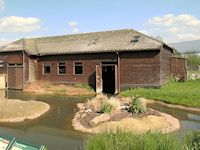

 Andean & Lesser Flamingos
Andean & Lesser Flamingos Arctic Adventure
Arctic Adventure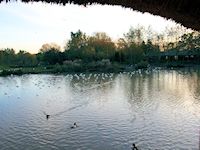

 Back From The Brink
Back From The Brink Caribbean Flamingos
Caribbean Flamingos

 Eider Lake
Eider Lake Flamingo Lagoon
Flamingo Lagoon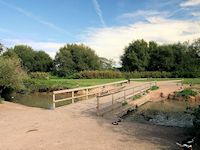

 Geese of the World
Geese of the World Mission Impossible
Mission Impossible
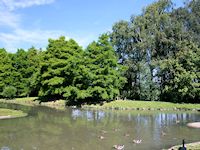
 Living Wetland Theatre
Living Wetland Theatre North America Zone
North America Zone
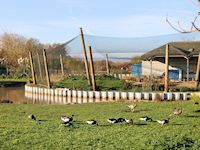
 Otter Pool Zone
Otter Pool Zone Screamers Zone
Screamers Zone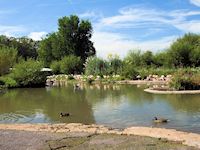
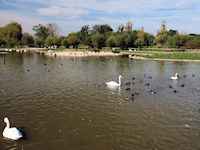
 South America Zone
South America Zone Swan Lake Zone
Swan Lake Zone

 Waterscapes Aviary
Waterscapes Aviary Estuary Shoreline
Estuary Shoreline

